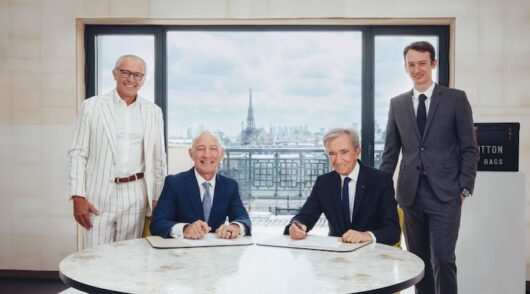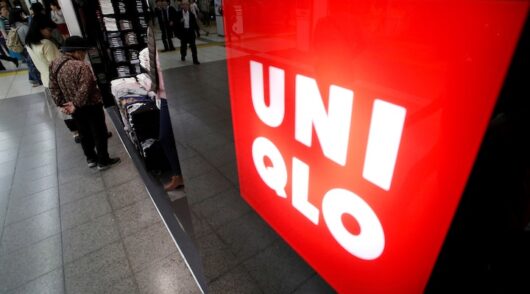Simon Property reported results for the second quarter on August 4. Refreshingly, David Simon and his colleagues in the company leadership refuse to indulge themselves in the national sport of complaining about ‘uncertainties’ and ‘headwinds’. Neither do they think they’ve ‘reimagined’ or ‘redefined’ anything, as so many retail companies like to claim. This is one very pragmatic company: they acknowledge the fact that uncertainties exist but never use them as an excuse fo
for underperformance. There’s no use trying to fix what isn’t under your control; just focus on what you do well. Acknowledge that negative issues are out there, but never take your eye off the ball. Now, as it did three months ago, Simon tells investors that tenant demand is as strong as ever and “the physical shopping environment continues to be the place to be”.
The tariff situation continues to loom large in everyone’s minds, and on that front, not a lot has changed since the last earnings release at the end of the first quarter. It’s a shifting target, up again, down again, and retailers importing into the US are battling with it day by day. CEO Simon keeps telling analysts that it isn’t affecting leasing volumes, but clearly it is still an issue of pricing for the retailers themselves. As the imports increase in price, retailers want not to be the only ones to feel the pain: they want manufacturers and consumers to take a bit of the load, too. Still, he says, the tariffs are only going to be a one-off price increase, and 2026 should at least bring certainty because by that time they won’t be yo-yo-ing around as much.
Meanwhile, the company is proceeding with its re-leasing of the approximately 100 Forever 21 stores that closed as a result of the retailer’s recent demise. The company is optimistic, and regards it as a great opportunity to carve out a significant increase in rent from the same space by subdividing it among smaller tenancies. David Simon even commented recently that he expected the rent could double over the next couple of years on the same space.
Mainly, it’s business as usual
Total revenue for the quarter amounted to US$1.5 billion, representing a 2.8 per cent growth from the same quarter a year ago. That brought revenue for the first half of the year to US$3.0 billion, up 2.4 per cent year-on-year. The leasing component of Simon’s revenue, which accounts for 92 per cent of the company’s top line, enjoyed growth of 4.8 per cent for the quarter and 4.9 per cent for the first half. Management fees also grew, but ‘other income’, a small miscellaneous category of revenue, fell.
Variable lease income, which is that part of the rental income that varies according to the ups and downs of actual tenant sales, remains at approximately 18 per cent of the total leasing income pie.
Net income for Simon’s stockholders in the second quarter rose by 12.7 per cent to US$556.1 million, bringing the total for the first half to US$969.8 million. That’s down about 20 per cent from the first half of 2024 due to some non-operational factors in the first quarter that were not related to the performance of the business. Simon, like other real estate investment trusts, likes to talk about a non-GAAP metric known as ‘funds from operations’ (FFO), a metric alien to retailers and most other industries. FFO strips out the large amount of depreciation (about 45 per cent of total operating expenses in Simon’s case) and measures the portfolio’s ability to generate cash flow. For the second quarter and first half, Simon’s FFO came in US$1.2 billion and US$2.3 billion, representing growth of 4.9 per cent and 3.5 per cent respectively.
Rents (and occupancy) both up
On the operations side, US portfolio occupancy continues to be nudged up, now at 96 per cent, while minimum base rent increased again, by 1.3 per cent. Despite the fact that shopper traffic at Simon’s malls is up, sales productivity is still flat: at Simon’s domestic malls and premium outlets, specialty retailer sales per square foot were US$736 per square foot for the trailing 12 months, up slightly from US$733 in the first quarter down from US$739 for calendar 2024, and down even further from US$745 per square foot in 2023. The plateauing of sales growth ―David Simon puts a different spin on it by saying “sales are holding their own” ― makes the tariff situation of even greater concern.
Misfiring at the border
In North America, traffic and sales at the Canada/US and Mexico/US border factory outlet centres has slowed for reasons that are well understood but it is difficult to see many of these properties being impacted permanently, mainly because most of them are high-quality centers and you can’t keep a good shopping center down. Still, the tourism outlook in the short-term isn’t that great: not only are the numbers of visitors from north and south of the border impacted but those from Europe also. Centers in the border areas and those heavily exposed to tourism were no longer outperforming the portfolio as they normally do, but rather were in line with it.
Portfolio numbers edging up but it isn’t the roaring ‘90s anymore
During the second quarter, Simon acquired full ownership of Brickell City Center, an upscale 500,000 square-foot open-air center in downtown Miami. This brought its global retail portfolio to 194 malls, lifestyle centers, factory outlet centers and megamalls in the US, 38 factory outlet centers overseas including 19 in Asia after the opening of Jakarta Premium Outlets in March. It also has a majority interest in 21 centers ― 17 in the US and four overseas ― from the Taubman portfolio.
Simon is becoming increasingly selective in its development and acquisition activity, and increasingly focussed on optimising the tenant mix rather than maximising rents, believing that the whole will ultimately be greater than the sum of its parts. As such, it can afford to downplay the stagnation in sales productivity, at least outwardly.
Further reading: Holding ground at home, betting on Asia: Inside Simon Property’s global strategy.







